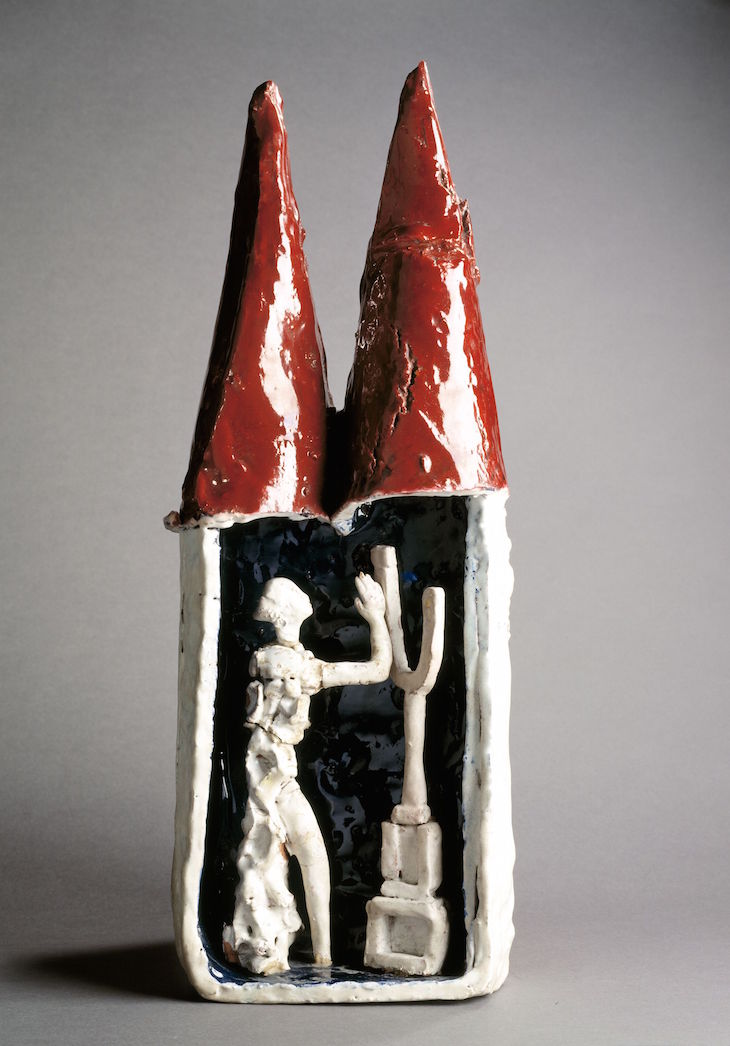The Italian artist Fausto Melotti (1901–86) once spoke of being ‘ensnared’ by the ‘laws, distractions and digressions’ of music. This exhibition suggests that the artist’s sinuous, abstract metal sculptures were in large part inspired by musical counterpoint. The display follows his career from the solid, geometric sculptures of the 1930s to the more delicate works for which he is best known. Find out more from the Estorick Collection’s website.
Preview the exhibition below | See Apollo’s Picks of the Week here

Hanging Garden (1970), Fausto Melotti. Courtesy Fondazione Fausto Melotti and Hauser & Wirth; © Fondazione Fausto Melotti, Milan
Before becoming an artist, Melotti studied mathematics and physics at the University of Pisa; his passion for these subjects exerted a lifelong influence upon his artwork. In his most characteristic works, such as this Hanging Garden, a sense of mathematical precision is evoked.

Orpheus (c. 1945), Fausto Melotti. Courtesy Fondazione Fausto Melotti and Hauser & Wirth; © Fondazione Fausto Melotti, Milan
In 1928 Melotti enrolled at the Accademia di Brera in Rome – here, he forged a lifelong friendship with Lucio Fontana. By the mid 1930s Melotti had joined the Abstraction-Création movement, alongside painters like Kandinsky and Mondrian, and begun participating in major exhibitions in Turin. His sculptures were not immediately successful with the public, and following the Second World War he started exploring figuration and ceramics; this cryptic depiction of Orpheus, frozen before a stringless lyre, reveals the Surrealist bent of Melotti’s work at this time.

Counterpoint XII (1975), Fausto Melotti. Courtesy Fondazione Fausto Melotti and Hauser & Wirth; © Fondazione Fausto Melotti, Milan
It was not until 1967 that Melotti’s sculptures met with broad approval. He began to create more delicate works, softening the geometry of his early solid metal sculptures with the incorporation of thinner lines, and sometimes the addition of wire and cloth.

The Uneasy Conscience (1973), Fausto Melotti. Courtesy Fondazione Fausto Melotti and Hauser & Wirth; © Fondazione Fausto Melotti, Milan
From the late 1960s, Melotti’s use of found objects and everyday materials connected him to the up-and-coming generation of Arte Povera artists in Turin. The Uneasy Conscience, with the tongue-in-cheek imputation it imposes upon the viewer through the incorporation of the hand-mirror, reveals the artist’s occasional tendency towards wry wit.











![Masterpiece [Re]discovery 2022. Photo: Ben Fisher Photography, courtesy of Masterpiece London](http://www.apollo-magazine.com/wp-content/uploads/2022/07/MPL2022_4263.jpg)
Suzanne Treister’s tarot offers humanity a new toolbox